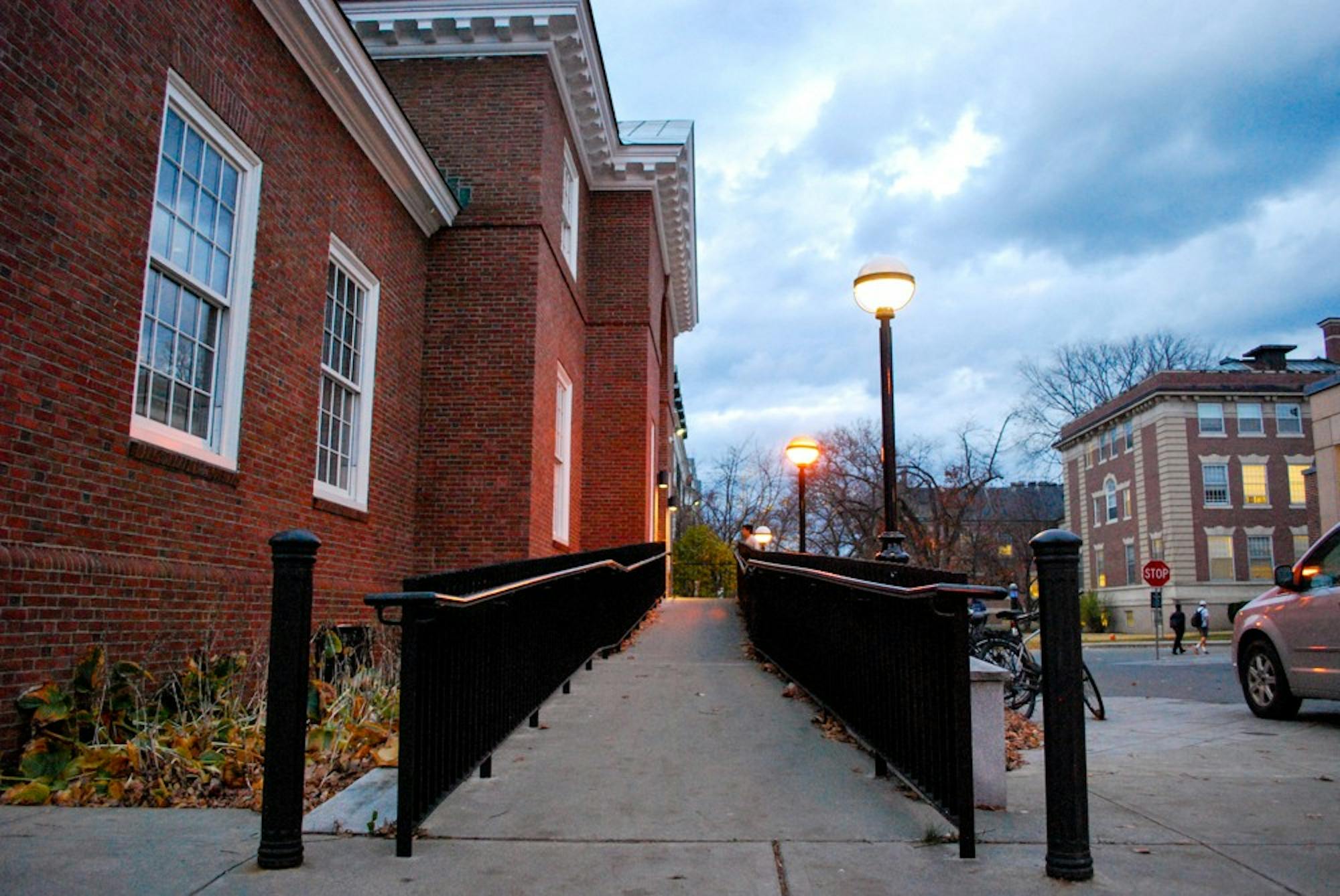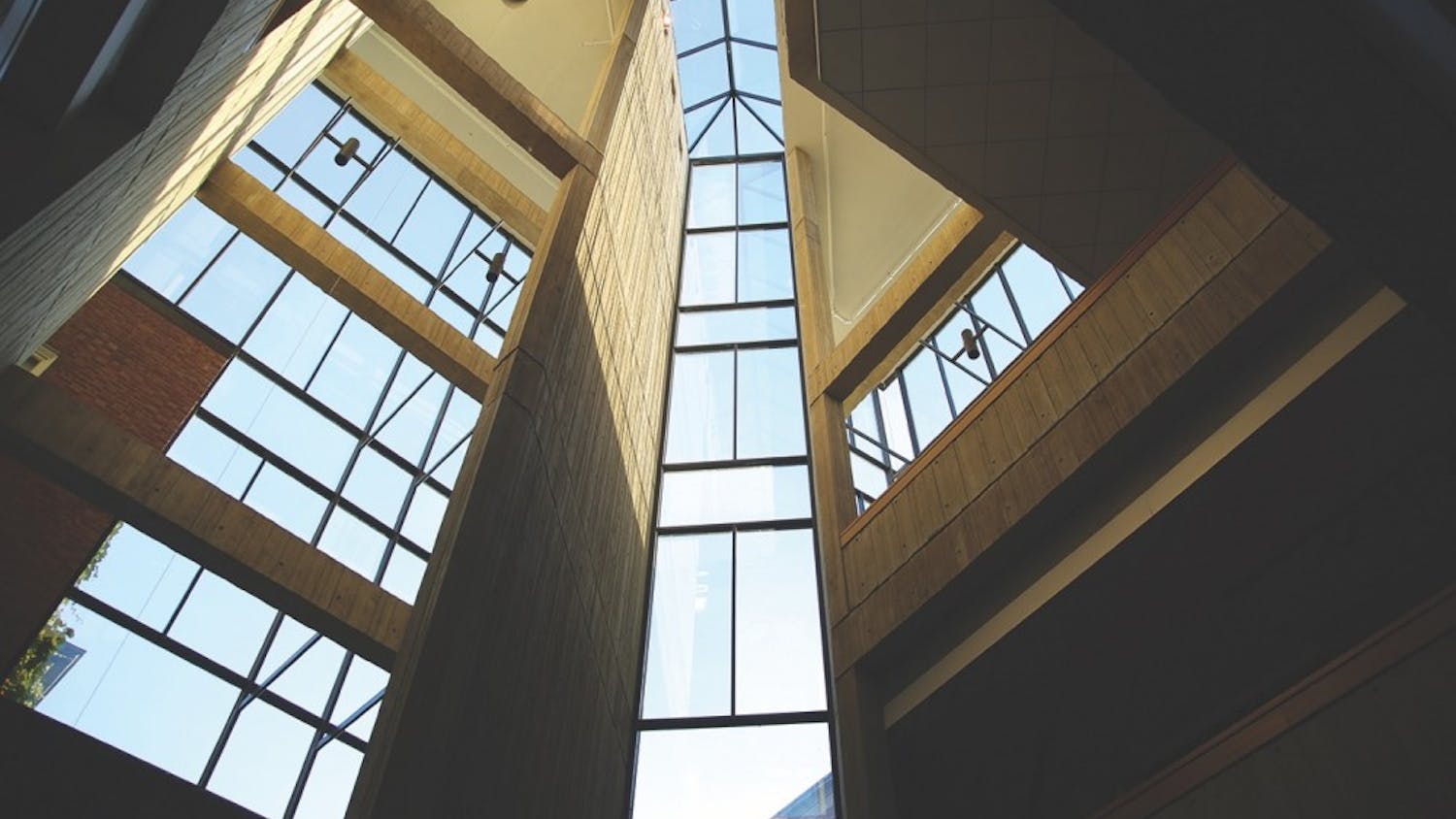Dartmouth is known for its picturesque campus and historical buildings. Yet, some of its beautiful architecture cannot be universally admired: for students with physical disabilities or injuries, navigating Dartmouth’s campus can be a struggle.
The College attempts to address these issues through several initiatives, headed by Student Accessibility Services. SAS provides specific services to address a host of needs including blindness, deafness, impaired sense of touch, smell or taste and motor disabilities. Additionally, the Undergraduate Housing Office works with students to determine reasonable housing accommodations, whether that be a room change for an injured student or fire-alarm devices for students with hearing impairments.
Yet, despite the College’s efforts to provide supplementary services for students with physical disabilities, there seems to be a lack of mention concerning the accessibility of buildings themselves. The top of the College’s webpage on accessibility reads,
“All access. Dartmouth works to ensure that programs, services, and activities are accessible to all.”
This mission is reflected in SAS’s support initiatives, but there is no mention of the obstacles that many of Dartmouth’s buildings and facilities present for physically disabled or injured students.
Cathy Henault, director of residential operations reflected on the accessibility of Dartmouth’s dorm buildings.
“Unfortunately, many of the residence halls are not conducive for people with physical disabilities. This is largely due to the age of the buildings. A few are not handicap accessible at all, while more are accessible to the first floor but nothing further,” she said.
Henault also addressed Dartmouth’s future plans to increase the accessibility of residential halls.
“Until we can do a full renovation, when we do smaller renewal projects, our goal is to make sure the first floor is accessible with at least one accessible bedroom and bathroom,” she said. “If the social space for the building is in the basement, our plan is to install a lift so the basement is accessible as well. During these renewals, the plan is to update the fire alarm system so each room is addressable with hearing and strobe lights.”
Until these renovations are made, students with physical disabilities or injuries struggle with the architecture’s shortcomings, which may mean changing their residence in the middle of the term or being unable to access their affinity or organization-based housing. Yet, the recognition of this problem and the active push to implement solutions may be a step in the right direction.
Studio art professor Zenovia Toloudi, an architect by trade, detailed how, having moved to the United States from Greece, she is impressed by the awareness and push for accessibility on the College’s campus.
“It’s a really complex process; architects need to take into account many layers of functionality, aesthetic, and historical and cultural elements. They have to synthesize all of these things together,” Toloud said.
She also addressed an architect’s responsibility to create a functional space that is simultaneously accessible.
“Accessibility-wise, in the USA architects have to follow the codes, and they’ve been strict about taking accessibility into account at architecture schools,” she said. “Architects need to think holistically and from the beginning to integrate the solution into the building or space instead of applying something at the very end. We need to be proactive about accessibility rather than reactive.”
However, as some of Dartmouth’s more inaccessible buildings were erected many years ago before such codes were established, the College must act retroactively.
Megan Nalamachu ’22 has had to grapple with the consequences of the inaccessibility of academic buildings every day. Having broken her ankle at the beginning of the term, Nalamachu has spent more than half the term on a scooter.
“The College is not accessible,” Nalamachu said. “There’s quite a few buildings that are difficult to get in, and if I do want to navigate those buildings, I have to deal with stairs.”
Nalamachu further highlighted the severity of the inaccessibility of the College’s older buildings by describing her struggles to find a bathroom. She said that she has a class on the first floor of Dartmouth Hall, but if she needs to use the bathroom, she has to go to a completely different building because she can’t carry her scooter down the stairs.
The accessibility of campus isn’t just limited to access and conductivity of residential and academic buildings. It also includes daily acts like picking up packages from Hinman Mail Center or getting dinner. Nalamachu explained that throughout this term, she has had to have a friend with her at all times to help with basic acts like getting food at Foco or carrying packages back to her dorm.
“If there was a process where Student Accessibility Services could communicate with Hinman so that for certain people that can’t carry boxes Hinman could send someone to deliver the boxes, that would be brilliant. Especially for people that are injured and can legitimately not carry anything,” Nalamachu suggested.
Her idea highlights the fact that accessibility on campus is not just about helping students in classes or renovating buildings, it’s about truly making their life on campus seamless.



